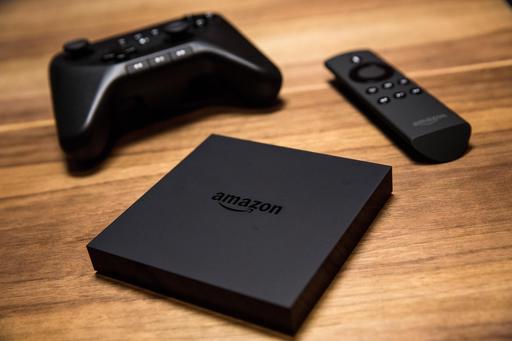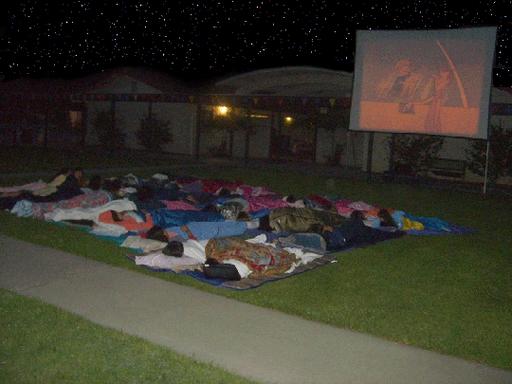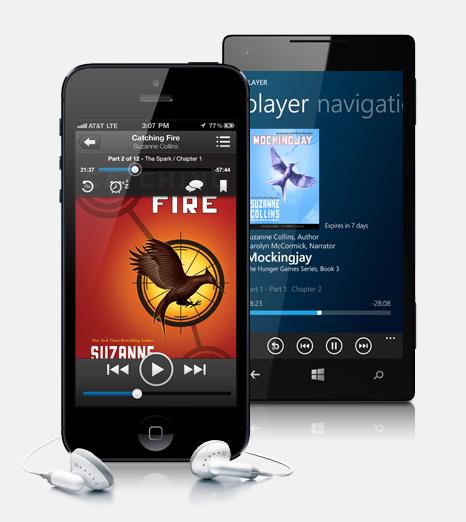
What's more fun than working with Linux? Playing with Linux!
In my last article, I talked about the various techie ways I personally manage the health and exercise issues in my life. This time, I want to talk about nerdy entertainment, and how technology influences the fun parts of my day-to-day existence. Not that health and exercise aren't fun—but, you know what I mean. Let's consider these two articles a “summer vacation” from the server room and command line. For those of you in the southern hemisphere, it can be an extended winter break. For my next article, I'll put my virtual work clothes on and teach some Linux, but here it's about making technology serve our entertainment whims.
Let's face it, sometimes it rains and you can't go outside. Sometimes it's too sunny, and if you go outside you'll burn. And sometimes, you're an insomniac, up all night with nothing to comfort you but the pale blue glow of a monitor. Whatever excuse you need to tell yourself, gaming on Linux is better than it's ever been (Figure 1).
Steam:
Few things have helped the Linux gaming scene as much as the folks at Valve providing a native Linux version of the Steam platform. No, not all games are available for Linux, but there is a surprisingly large number that is. Whether you like to shoot zombies with the Left-4-Dead franchise or prefer to play Indie games, which often have incredible gameplay while sacrificing big-budget special effects, Steam is a resource for tons of awesome games. Download the client and start building your library now: www.steampowered.com. (If you don't like Steam, check out Desura, which is a similar concept: www.desura.com.)
Android:
Just saying “Android” isn't really specific enough anymore. Google's mobile operating system is getting embedded into more and more products every day. In this particular case, however, I'm referring to phones and tablets. Although there certainly are epic games available for Android, I find the quick and challenging games are the most fun. While I personally never understood the draw of games like Flappy Bird, I will admit to hours <strike>lost</strike> invested into Angry Birds and Candy Crush (Figure 2). In fact, Android is becoming such a gaming platform, many games are being cross-compiled for PCs and Android (https://play.google.com/store/apps/category/GAME).
Ouya, Fire TV and Roku:
Remember plugging your Atari 2600 in to the black-and-white television and playing Pac-Man with a single-button joystick? No? Fine. Do you remember plugging your Nintendo in to the living-room TV and playing Legend of Zelda with a boxy controller? Well, even if your earliest console gaming memories are of Wii Bowling, the latest Android-powered gaming devices should be reminiscent of those old days, with a modern twist. Gaming and streaming entertainment are starting to merge together as the platforms mature, and devices like the Roku are proof. Whether you want to stream old episodes of Star Trek or fling angry birds at naughty pigs, these new console devices are easy to use and fun to play with (www.ouya.com, amazon.com/firetv and www.roku.com).
Humble Bundle:
I've mentioned the Humble Bundle folks before. It's a great organization that sells Indie products and raises money for charities. As it happens, it also supports Linux and Android platforms with most of its game releases. Be sure to read closely, however, because although the Humble Bundle folks try to find developers who support cross-platform gaming, sometimes the “bundles” are Windows-only. Because there's typically a new bundle every few weeks, it's not usually a big deal, however. Just be careful before you click.
I already used the rain excuse, and the insomnia excuse is just depressing, but whatever your reason for being inside, watching the television is a time-honored way to kill the time. Healthy? Probably not, but that was last article's topic; here it's all about fun. And personally, I love to watch the TV!
Plex:
I've written in length about Plex and Plexmediaserver in past issues, so I won't belabor the point much more. It's impossible to talk about Linux-based video-watching without bringing up one of my favorite consumption methods though, so here it is. Plex is awesome. You can watch your personal video collection on a plane, in a car, in a box, with a fox—anywhere you happen to be, your video collection is available to you. You even can make individual videos available off-line for those rainy camping trips out of cell tower range. My only remaining frustration with Plex? It doesn't support playlists. Thankfully, that's in the works for future versions (www.plex.tv). For playback on your own network, it's hard to beat the XBMC interface, which is what I still use on our TVs (www.xbmc.org).
Roku and Fire TV:
I know, I mentioned these in the gaming section, but gaming is really a secondary function. These are both Android-based streaming devices. The Roku has a huge market share, which is interesting because it doesn't actually produce or stream content of its own. I find that refreshing, because it means the platform doesn't favor one video source over another. The Amazon Fire TV, on the other hand, does favor Amazon products. This isn't shocking, but it does admittedly allow for a number of third-party apps. Both devices support Netflix and Hulu, and have a native Plex app! If you want Plex on a television, it's hard to beat a Roku or FireTV (Figure 3).

Figure 3. The Amazon Fire TV is a media streamer and a low-end gaming system. The interface is sleek, and if you're an Amazon user, it will be convenient.
Backyard Drive-in:
It might sound cheesy, but if you're a little adventurous, an outdoor movie screening is incredibly fun. Make sure there are blankets for the ground, or some chairs, and provide bug spray along with the popcorn. I actually recommend using a yard fogger to keep the bugs at bay. The tech side is fairly simple. Find a light-colored building or hang up a white bed sheet, and use a projector to create your outdoor “theater”. It helps to have some good speakers, and tons of popcorn. I find 1980s action movies or cheesy B-rate horror films to be the best choices, but your tastes will likely vary. The fun part for the kids is waiting until after dark to start the movie. They almost never last through the whole movie, but it's fun for the whole family (Figure 4).

Figure 4. Outdoor theaters are just cool! (Photo courtesy of kelemvor: backyardtheater.com/forums/index.php?action=profile;u=181.)
Streaming Music:
We've gotten to the point with music that finding ways to get songs is super simple. Tools like Google Music's matching program (or iTunes “Match” subscription service) mean our music is always available to us from the cloud. Oddly, I don't own very much music, because I'm fickle and switch tastes often. For me, the streaming services like Pandora are ideal, because based on my likes and dislikes, they pick songs I'll probably enjoy. And, they're usually correct. Like I mentioned, there are tons of platforms for music. Rhapsody, Spotify, Last.FM, Pandora, Google Music—whatever style of consumption appeals to your particular taste is available.
Music Hardware:
I know, you're thinking, “Shawn, 'music hardware' is called 'speakers'”, but I mean more than just speakers. For instance, I like to listen to audiobooks in the shower. It means that a good book will sometimes result in running out of hot water, but I still enjoy listening to them nevertheless. I tried a wide variety of Bluetooth-enabled shower speakers, and quite frankly, they all stink. I'm hoping someone has found one that is loud enough for old deaf people like me, but so far, I have a drawer full of tinny-sounding Bluetooth devices with suction cups. If you know of a good Bluetooth speaker designed for the shower, please let me know! I'll be sure to write about it in a future issue and give you praise and credit!
Something I've been working on more recently is a portable speaker system for the backyard. I could open the window and jam a speaker into it, but I really want to control the music from my phone. My current solution is to cram some powered speakers into a laundry basket, and connect it to something like the D-Link WiFi Audio Extender so I can stream wirelessly to wherever I set the basket. In fact, the folks at D-Link sent me their newest model (the DCH-M225), and I'm going to try to make a proper weekend project out of building the perfect portable jam center. If it works, I'll write about it in a future issue. If it fails, I'll probably post sad pictures on our Twitter feed (Figure 5).
I love reading. This is probably not a surprise, since I'm a writer, a nerd, socially awkward and get a sunburn from thinking warm thoughts. I've spent a lot of time indoors, and a lot of that time has been in faraway places with aliens and trolls. When I was younger, I had to brave the outdoors long enough to walk the couple miles to the local library. Now, I have an endless supply of alternate realities at the literal tips of my fingers. And the eBook revolution has only just begun!
Audible:
I must admit, my hectic lifestyle means that most of my reading is done while I'm driving my kids from one appointment or sporting event to the next. (My kids, unlike their father, are fairly athletic—I don't understand genetics.) Since reading a book while driving is illegal and a poor example for my kids, I tend to listen to books more than read them. Audible is a great way to get the most recent books delivered seamlessly. The Android app will sync your spot with a Kindle eBook if you buy both versions, so you can read at stoplights if you really prefer the written word. I don't suggest that though, as it seems dangerous!
Non-Audible Audiobooks:
The only downside of audiobooks is the cost. Mind you, the cost is understandable, because the author, narrator and entire production crew deserve to be paid for their work, but it means that instead of $7 for a paperback, it's $25 for a performance. There are other audiobook resellers, but the selections are never as good as Audible, and the prices aren't much better. Thankfully, there's another option, depending on where you live—the library.
Unfortunately, the availability of audiobooks varies widely from library to library. When I lived in a city, my local library had more audiobooks than I ever could listen to, plus, the librarians almost always would buy a book if I requested they add it to their library! Now that we're in a small town, the local library doesn't have the budget to carry a large selection. Your library might be able to import physical copies of audiobooks for you, but the on-line digital stuff is really the nicest. If you have friends or relatives in a big city who don't use their local library, perhaps you could work out a deal with them. I'll leave the moral implications up to you to sort out.
Generally with a library, you get free access to a number of audiobooks at a time. The Overdrive app is the standard method used to access those books. Libraries still are sorting out DRM issues, and some books are available only on Windows-compatible listening devices. That really annoys me, so I tend to find ways to strip the DRM from the books and listen to them on whatever darn device I want (generally an Android device running the SmartAudiobook Player www.linuxjournal.com/content/android-candy-smart-audiobook-player). Again, there are moral implications. Nevertheless, the library is a great resource for audiobooks. Sometimes, the selection is amazing. Even if it isn't, contact the librarians—sometimes they have a budget for ordering more books, but they're just waiting for requests. Find the app at omc.overdrive.com, and ask at your local library about its digital options (Figure 6).

Figure 6. The Overdrive app is really slick, but is only as useful as the selection your library offers. (Photo courtesy of overdrive.com.)
I know, for many of you, nothing ever will replace dead tree pulp and ink. I still painfully remember the years of Letters to the Editor sharing everyone's frustration when Linux Journal switched to digital. Thankfully, eBooks and their reading devices continue to improve year after year. Now, like with music, there are so many ways to get and read eBooks, it can be overwhelming.
The Standard Stores:
Amazon (Kindle), Barnes & Noble (Nook), Apple (iDevices), Google Play (Android devices), plus a ton of smaller companies sell eBooks. With most companies, the idea is to lock you in to their ecosystem, so you always will buy from them instead of bargain shopping for the best price. This is both good and bad. Companies like Amazon make the purchasing and reading experience so seamless and pain-free that it's hard to go elsewhere, even if a book might be less expensive from a competitor. You're paying for convenience along with the book itself.
It's certainly possible to install all the major apps on your Android device and read a book on whatever platform you could buy it for the cheapest, but most of us tend to like a consistent interface and don't want our book selections splintered across various cloud accounts. I'm horribly guilty of this, and I tend to buy all my books from one particular vendor. In fact, it wasn't until I started buying eBook bundles from Humble Bundle that I had to rethink my eBook collection.
Humble Bundle:
Yes, the same folks who provide the awesome selection of games on a regular basis now also provide eBook bundles. The bundles usually contain books from authors I love, and I really like to support the charities by purchasing books. You pay what you want, and the money gets split among various charities along with the author. (As it happens, Linux users are always the top contributors per capita. Go freedom!)
These DRM-free eBooks are just downloads and aren't part of any cloud ecosystem. That meant I had to come up with some way to consolidate my eBook library in one place. Thankfully, Calibre (www.linuxjournal.com/content/calibre-cloud) is a great tool for managing an eBook collection. Yes, it means stripping some DRM off my Amazon books, but having all my books in one “library” is like a salve for my OCD.
The Overdrive Library Again:
Remember the Overdrive program for listening to audiobooks from the library? Well it also does eBooks and includes an app for reading the library-loaned eBooks you check out. I do think it allows for an unfortunate side effect in that going to the library is no longer necessary for reading books, but that's just nostalgia on my part. I'm thrilled libraries are evolving, and I urge you to check out your local library's digital collection!
Oyster:
Finally, I leave you with Oyster. You may have read about it in the UpFront section of this issue, as it won this month's Editors' Choice award. Oyster is basically the Netflix of the book world. With a $9.95 subscription and an app on your phone and/or tablet, you get unlimited access to more than a half-million books! Read about it in the UpFront section, or surf over to www.oysterbooks.com for more details and a free 30-day trial.
Honestly, after all the years of working as a sysadmin, writing for Linux Journal and just being a geek, my favorite Linux pastime is learning. I love to build projects like BirdCam (birds.brainofshawn.com). I'm excited every time I can solve a household problem with a Raspberry Pi (the digital fireplace in my family room, for instance). And it's all I can do not to quit writing this article so I can go build my outdoor, mobile, wireless speaker system for streaming music in the backyard.
Whatever your favorite Linux adventure might be, hopefully some of the things I discussed here make those adventures more fun. At the very least, I hope you check out your local library to see what sort of digital offerings it provides. It's awesome to see an establishment as old as the library move into the next phase of free knowledge sharing. Libraries understood the idea of open source before the term even meant something. Enjoy the rest of your summer (or winter!) everyone, and get ready for next issue, when we're back in the classroom.